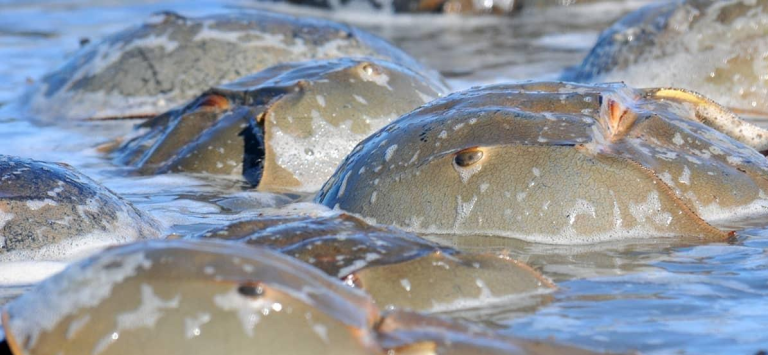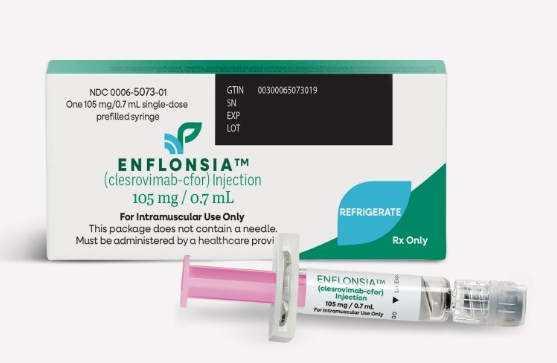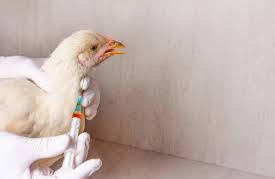For many decades, the blue colored blood from horseshoe crabs has been harvested for purposes of medical research and for quality control and safety testing in vaccines, prosthetics and intravenous drugs. Their eggs are also a staple food for a shorebird bird known as the red knot, which is listed as threatened under the Endangered Species Act. Fishermen also use horseshoe crabs as bait. The vested interests between the pharmaceutical industry, fishermen and environmentalists have resulted in new guidelines on how to preserve and handle horseshoe crabs.1
In the 1960s, scientists discovered that the blue colored blood found in horseshoe crabs would clot when it encountered toxins from bacteria.2 The blood from horseshoe crabs contains a special clotting agent that is used to make a testing reagent known as Limulus Amoebocyte Lysate (LAL). The unique properties of LAL encase Gram-negative bacteria, which typically produce harmful endotoxins and are a potential source of contamination.
Endotoxin from Gram Negative Bacteria in Vaccines Can Be Deadly
Gram-negative bacteria exist in our environment but become dangerous when entering the blood stream of human beings, causing fever, collapse/shock, and it can lead to sepsis of the blood and death. The smallest presence of endotoxin in a pharmaceutical product such as a vaccine can cause severe health complications. Whole cell pertussis vaccine in DPT shots is one vaccine that has been notably associated with varying quantities of bioactive endotoxin.3
LAL from horseshoe crab blood has been used to detect endotoxins in vaccines, injectable medicines, and medical devices.4 Since horseshoe crab blood is the only natural source of LAL, the medical industry is solely reliant on this particular animal for endotoxin testing. Consequently, horseshoe crab populations have been declining in the United States and Asia.
In 1990, biologists estimated that there were 1.24 million crabs spawned in Delaware. However, in 2002 it significantly dropped to 333,500 and has remained the same until 2019.5
Horseshoe Crab Bleeding Companies Have Violated Harvest Laws
In 2021, five federally licensed horseshoe crab bleeding companies based in in South Carolina, New Jersey, Massachusetts, Virginia and Maryland drained blood from over 700,000 crabs. It has been estimated that 80 million quality control tests are performed each year around the world using LAL from the blood.6 Conservation activists groups have noted that the blood is worth $15,000 per quart.7
The expansion of the crab bleeding industry has resulted in bleeding companies being more secretive and inhumane in their operations with minimal coast-wide regulation. It has been reported that fishermen paid by the bleeding companies have mishandled crabs in ways that cause harm to the crabs and violate harvest laws without being held accountable.8
Laws involving horseshoe blood harvesting vary by state, but the general process involves crabs that are either taken from the shore or from the bottom of the ocean using nets, piled on top of each other in boats, loaded into trucks and delivered to bleeding facilities. Laboratory workers pierce the crabs through their hearts and drain them alive for for eight minutes, which drains them of more than half their volume of blood. In Massachusetts, some of the crabs are then sold to be bled and killed and then used as bait. In South Carolina and New Jersey, they are given back to the fishermen to return to them to the ocean.9
Although horseshoe crabs are drained of their blood and put back onto the shore, many do not survive from the bleeding. It is estimated that approximately 15 percent of the crabs die in the bleeding process. In 2021, regulators estimated that 112,000 horseshoe crabs died from bleeding.10
New Guidelines to Protect Existence of Horseshoe Crabs
In response to the unregulated horseshoe crab bleeding industry, the Atlantic States Marine Fisheries Commission (ASMFC) approved new guidelines in May 2023 on how to handle horseshoe crabs in order to ensure they are kept alive after the bleeding process. The new guidelines state that companies must limit the crabs’ exposure to sunlight and keep them cool and wet. Caitlin Starks, a senior fishery management plan coordinator with the ASMFC said:
The goal is to give the crabs that are bled a better chance of surviving and contributing to the ecosystem after they are released.11
New Synthetic Alternative to Horseshoe Crab Blood
The U.S. Pharmacopeia (USP), an independent, scientific nonprofit organization announced a draft chapter on endotoxin testing using “non-animal-derived reagents.” Its comment period will run from Nov. 1, 2023 to Jan. 31, 2024.12
A synthetic alternative to LAL known as recombinant Factor C (rFC) was developed in the late 1990s and became commercially available in early 2000; however, the pharmaceutical industry did not make the switch over to using it because of limited data, supply issues and limited regulations. In 2012, the U.S. Food and Drug Administration (FDA) issued guidance for incorporating rFC into endotoxin testing.13
In 2016, drug manufacturer Eli Lilly and Co., based in Indianapolis, Indiana, declared that all new products would be tested using the synthetic rFC reagent instead of LAL. Jay Bolden, a senior biologist and director of quality at Eli Lilly said that the company is now 80 percent converted to using non-animal derived reagent rFC instead of LAL that involves bleeding crabs. He added that other drug companies including Sanofi SA, Pfizer, Inc. and Roche Holding AG have made similar commitments to use the synthetic alternative over LAL and one smaller medical device company already has an approved product that was tested using rFC.14
If you would like to receive an e-mail notice of the most recent articles published in The Vaccine Reaction each week, click here.
Click here to view References:1 Whittle P. Blue blood from horseshoe crabs is needed for medicine, but a declining bird relies on crabs to eat. ABC News June 30, 2023.
2 Eisner C. Coastal biomedical labs are bleeding more horseshoe crabs with little accountability. NPR June 30, 2023.
3 Dias WO, van der Ark AAJ, Sakauchi MA et al. An improved whole cell pertussis vaccine with reduced content of endotoxin. Hum Vacc Immunother 2013; 9(2): 339-348.
4 BioMérieux. What Horseshoe Crabs Have to Do with Vaccine Development—and Why It’s a Problem. Apr. 28, 2023.
5 Ibid.
6 Eisner C. Coastal biomedical labs are bleeding more horseshoe crabs with little accountability. NPR June 30, 2023.
7 Whittle P. Blue blood from horseshoe crabs is needed for medicine, but a declining bird relies on crabs to eat. ABC News June 30, 2023.
8 Eisner C. Coastal biomedical labs are bleeding more horseshoe crabs with little accountability. NPR June 30, 2023.
9 Ibid.
10 Whittle P. Blue blood from horseshoe crabs is needed for medicine, but a declining bird relies on crabs to eat. ABC News June 30, 2023.
11 Ibid.
12 Flore K. Horseshoe Crab Blood in Drug Safety Testing? It May Not Be Needed Much Longer. MedPage Today Sept. 1. 2023.
13 Ibid.
14 Ibid.













One Response
Horseshoe Crabs are now considered to be arachnids, related to spiders. All four species are ancient. Red Knots and other shorebirds feed. on their eggs to nurture themselves during their arduous migration to the tundra where they breed.
By recklessly destroying this vital species, we disrupt food chains. We harm the ecology. Without a healthy ecology, other species also are harmed. These food webs and chains are vital to our own existence.
Synthetic chemicals can now be substituted for the blood of the Horseshoe Crab, and can be used to detect toxins in these vaccines and other medical products. Some companies are switching to synthetic chemicals for detection of endotoxins and saving the Horseshoe Crab from further harm. Their blood is based on copper, not iron.